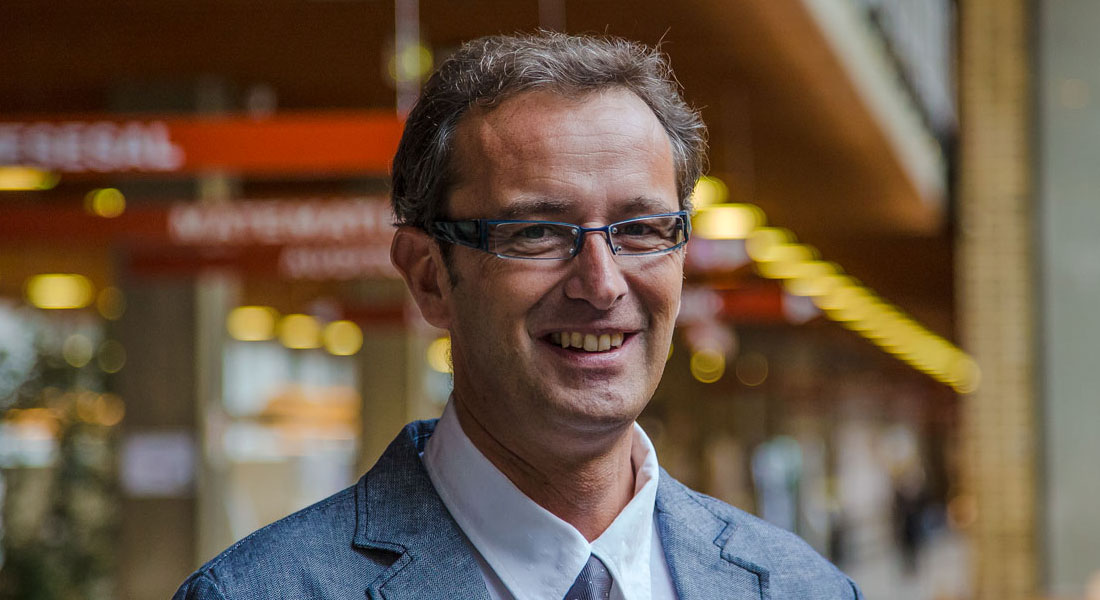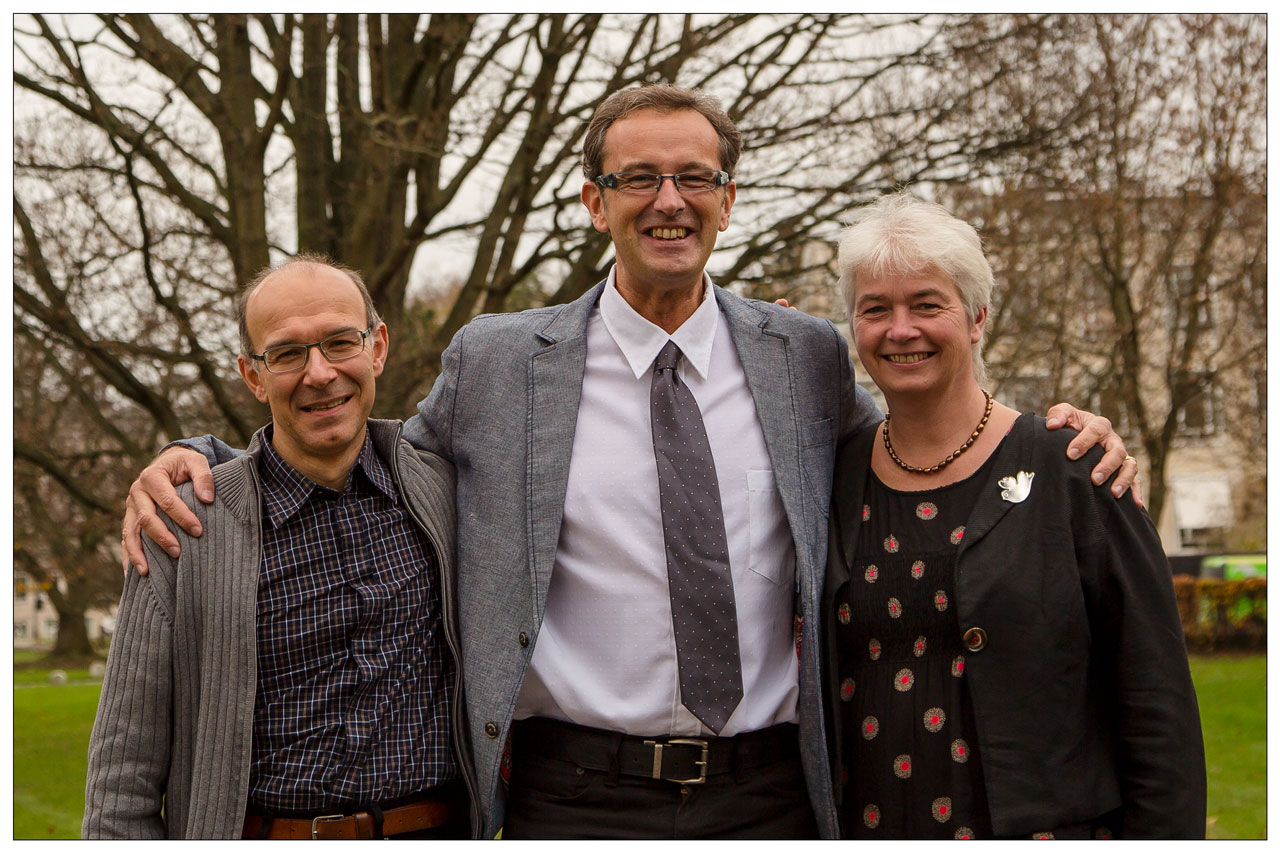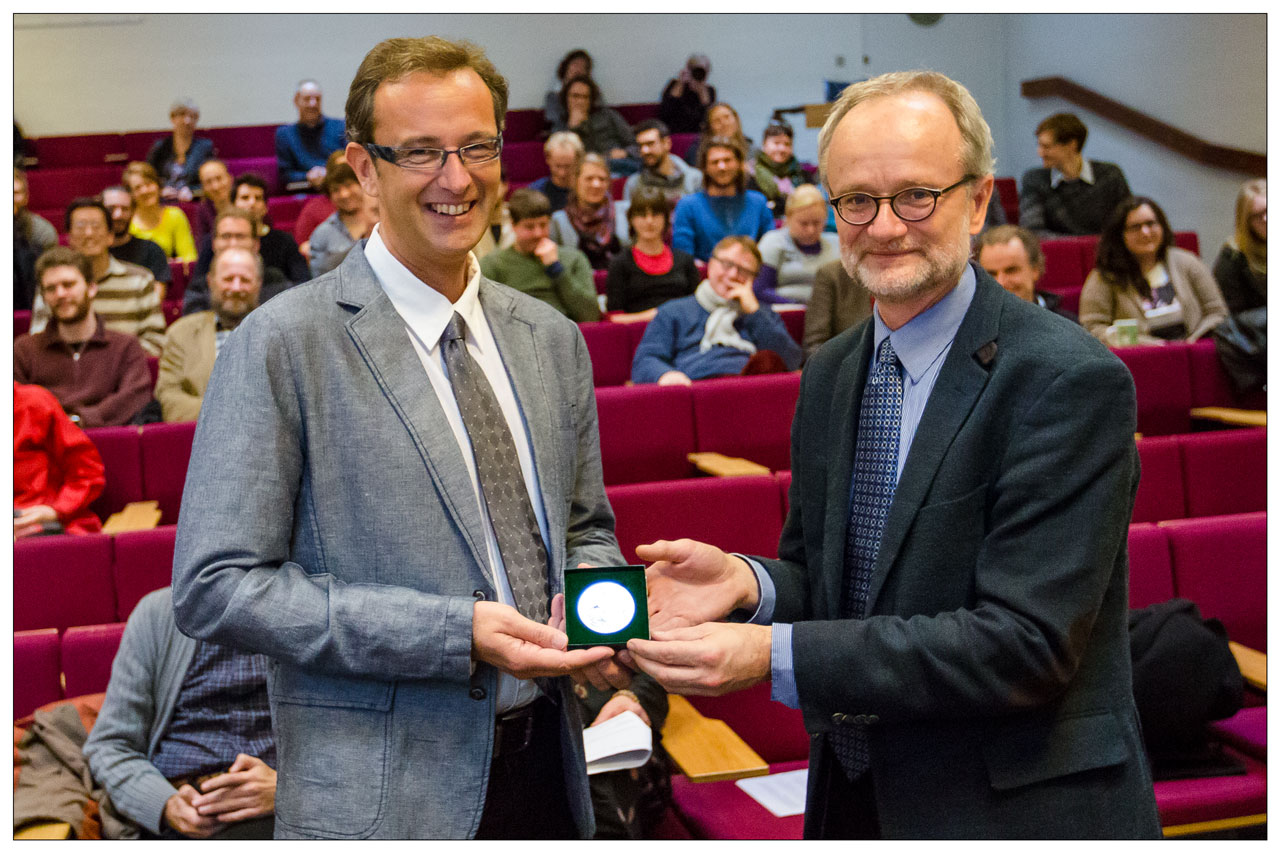Jérôme Chappellaz receives the Niels Bohr Institute’s Medal of Honour
Jérôme Chappellaz is a glaciologist and the director of the Laboratoire de Glaciologie et Géophysique de l’Environnement in Grenoble, France. He researches ice cores that are drilled through the ice sheets of Antarctica and Greenland and he analyses the atmospheric composition in order to reconstruct past natural climate variations compared to the concentration of greenhouse gases. In recognition of this important work, Jérôme Chappellaz has been awarded the 2014 Niels Bohr Institute’s Medal of Honour.

The ice sheets on Antarctica and Greenland are formed by snow that remains year after year and is gradually compressed into ice and each annual layer contains traces of past climate conditions. However, even though both ice sheets are approximately three kilometres thick, they can tell very different climate histories.
On average, about one meter of snow falls on Greenland each year and the annual layers reach back approximately 140,000 years. In contrast, only about 10 cm of snow falls on Antarctica each year, so the annual layers are thinner. However, they go back about 800,000 years back in time.
This means that by drilling ice cores through the Greenland ice you can get detailed information about each year, while you can get a better overview of the Earth’s changing climate through ice ages and warm interglacial periods from Antarctic ice.
Groundbreaking climatic knowledge
Jérôme Chappellaz was the leading researcher in 1992 when the research results from an ice core from Antarctica demonstrated that there was a correlation between the Earth’s climate and the amount of greenhouse gases in the Earth’s atmosphere.
The research showed that when the Earth was a cold ice age, there was less of the greenhouse gases and methane than when the Earth was in a warm interglacial period. It was groundbreaking new insight about the relationship between global temperature and greenhouse gases.
This knowledge is highly relevant today as we face global warming.

Jérôme Chappellaz been involved with ice core research for more than 25 years and for years he has worked closely with researchers at the Centre for Ice and Climate at the Niels Bohr Institute, which heads the ice core drilling projects in Greenland.
“Jérôme Chappellaz is an outstanding researcher and he really has a passion for the research. He has developed a new laser technique so that you can very quickly and effectively measure the contents of the air bubbles in the ice and determine the composition of past atmosphere.
This has given a boost to the measurements. And then he is really good at participating in projects and helping to get things to fall into place,” says Jørgen Peder Steffensen, Associate Professor at the Centre for Ice and Climate.
A passion for research
Drilling ice cores through a three-kilometre thick ice sheet is a large, expensive and lengthy project that often takes 4-5 years. It is therefore of paramount importance that you choose the right drilling sight with undisturbed annual layers so that you can get a reliable climate series.
Jørgen Peder Steffensen explains that Jérôme Chappellaz is therefore working on a project to develop a probe that can melt its way through the ice and in the probe is equipment that can analyse the meltwater from the ice all the way down through the three-kilometre thick ice sheet, thus providing an overview of the annual layers and registering whether they are in order or if they have been upset by the movements of the ice sheet.

The probe will be small and mobile and will help the researchers make certain that they have chosen just the right drilling sight – a huge advantage for future drilling.
“Jérôme Chappellaz is receiving the Niels Bohr Institute’s Medal of Honour for his outstanding work within climate research, his great international outlook and his focus on collaboration and the exchange of knowledge.
Jérôme Chappellaz has worked closely with researchers at the Centre for Ice and Climate for more than 20 years,” says Robert Feidenhans’l, head of the Niels Bohr Institute.
The presentation of the Medal of Honour took place on 26 November at 14:00 at a ceremony in Auditorium 4 at the H.C. Ørsted Institute.
